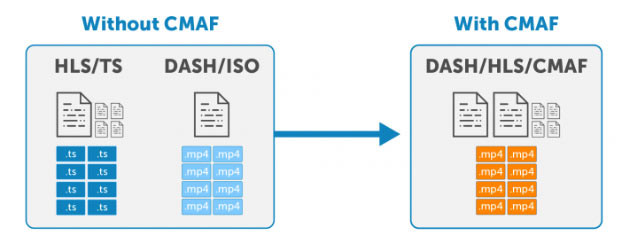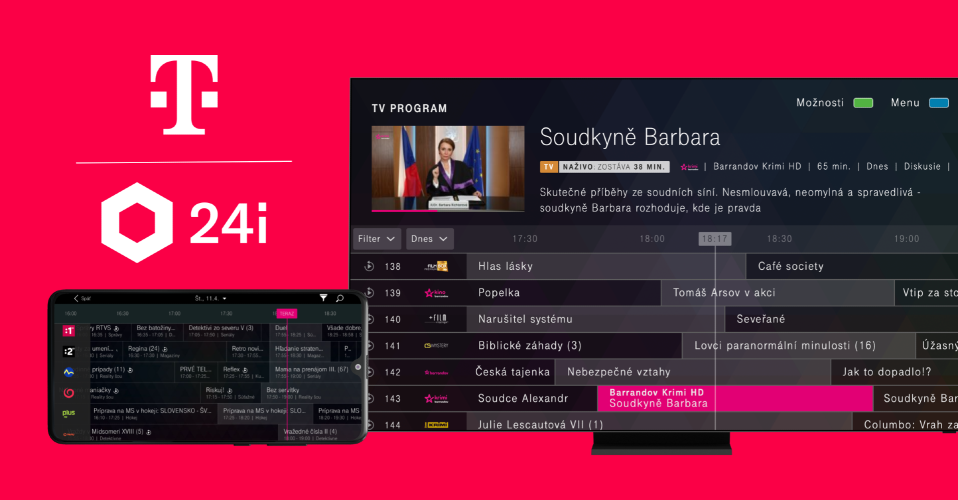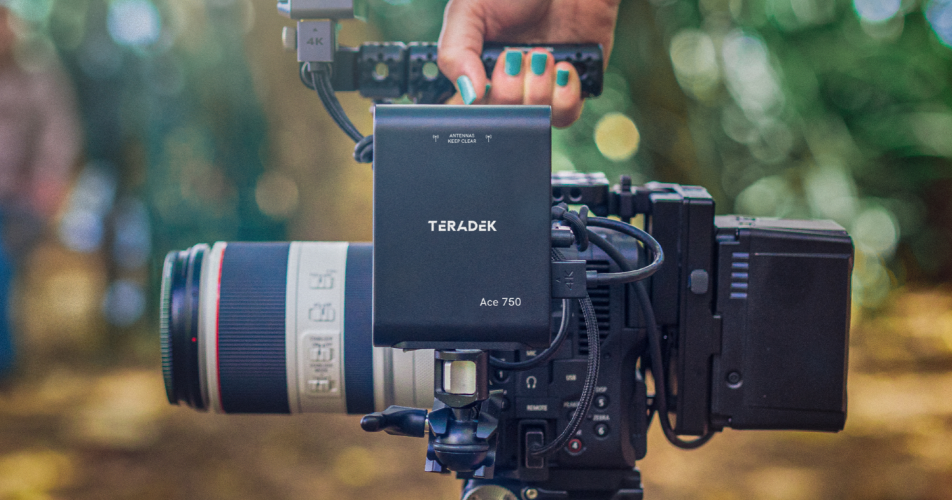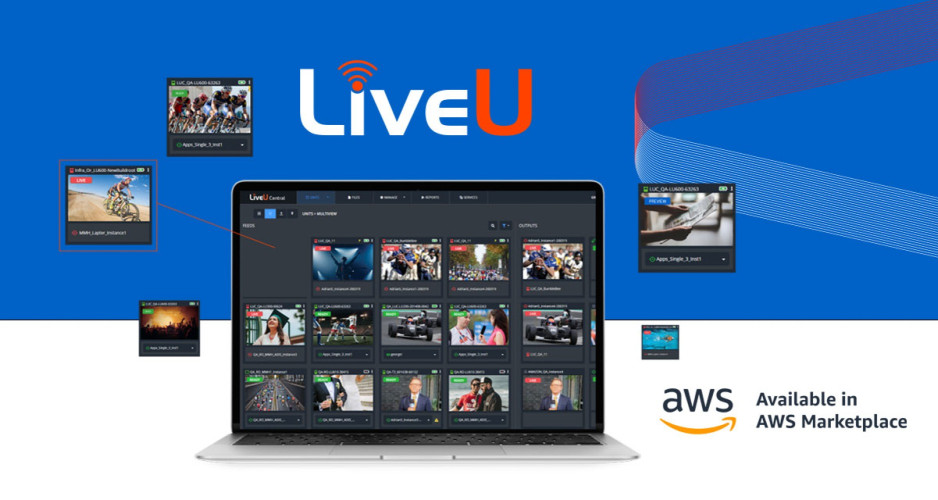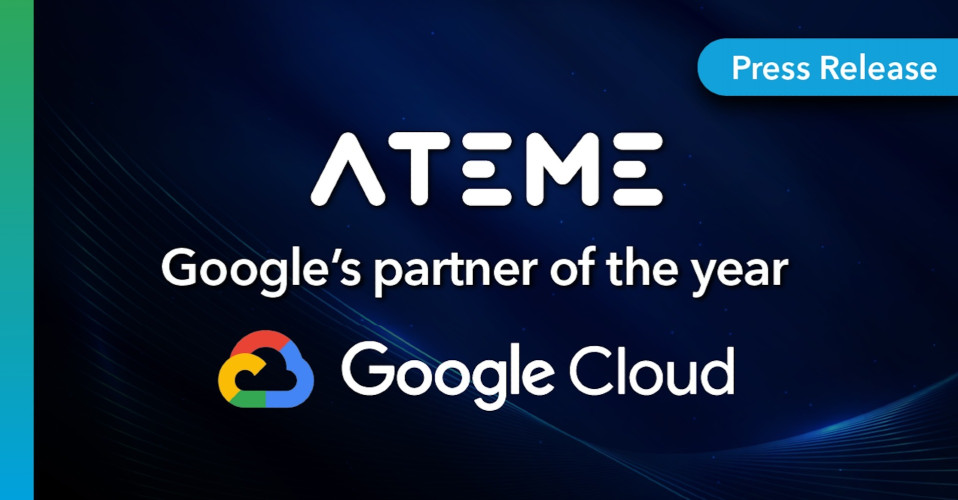Eye to Eye: Video over IP

Author: Bob Pank#
Published 1st May 2012
Live video streaming via Internet Protocol is perhaps most familiar in the form of Skype’s free-of-charge online videophone service. Skype is a very easy way for an on-location broadcaster to get a video contribution back to base. A safer and more conventional technique, as with a reporter-to-anchor interview, is to live-stream video via one’s own IP encoder straight into the studio for immediate viewing over a terrestrial and/or satellite network. If time is not so critical, the story can simply be emailed as a file straight out of the reporter’s camcorder.
Live streaming via IP also offers the option of one-to-many near-live content distribution if speed happens to be a vital issue. This is a big subject, encapsulated here into a summary of the latest equipment on offer from the major suppliers.
Ateme’s CM4101 IP encoder is intended for use in contribution and distribution. It can be upgraded from SD to HD, in MPEG-2 or MPEG-4, 4:2:0 8-bit up to 4:2:2 10-bit. It is also capable of streaming AVC-I frame only MPEG-4 up to 150 megabits per second. From the same company, the DR8400 is an integrated receiver/decoder designed for high quality contribution. It has a double built-in DVB-S/S2 demodulator, IP Gigabit and ASI with a transport stream speed of up to 200 megabits per second. Decoding speed is up to 80 megabits per second. The DR8400 is also capable of decoding AVC-I frame streams of up to 150 megabits per second. It includes full front panel control and an unique and a browser-based user interface with monitoring features.
Blackmagic’s ATEM Television Studio allows live production and simultaneous generation of H.264 files for the web. Suggested applications include local government meetings, school productions and community events. The basic ATEM switcher is a chassis with a software-based control panel plus the option of hardware control. Blackmagic also offers DeckLink cards which can be used for streaming when combined with compatible software such as Adobe Flash Media Encoder.
Digital Rapids’ new carrier-grade StreamZ Live Broadcast hybrid live encoder can perform simultaneous H.264 or MPEG-2 encoding for traditional television applications. It can also handle and multi-format encoding (including adaptive bit rate streaming) for any-screen delivery to devices such as mobile phones, tablets and personal computers, all in a single encoder.
Envivio’s 4Caster C4 Gen 3 encoder/transcoder is designed to produce live video streams for mobile television, online television and Internet Protocol television from a single platform. It incorporates an Intel Xeon Processor 5600 Series and is firmware-upgradeable to support future formats including 1080p 3D.
Exterity has added to its AvediaStream encoder family the multi-codec e26xx and e36xx ranges, designed for live streaming to mobile devices and for digital signage integration. Video can be streamed to computer desktops, television receivers and digital signage systems using the IP network as well as over Wi-Fi and mobile networks to mobile devices such as phones and tablets. The AvediaStream modules support MPEG 2 and H.264 encoding at up to HD resolutions and accept a variety of SD, HD and PC video inputs.
Haivision’s new KulaByte internet encoder is scheduled for introduction at NAB 2012. Software-based, it is designed for streaming to Dynamic Flash and Adaptive HTTP Live Streaming networks. Also new is the Viper KB. Via its touch-screen interface, users can stream full HD at multiple bitrates for Dynamic Flash and Adaptive HTTP Live Streaming networks.
Harmonic’s ProMedia Capture video ingest engine allows real-time ingest of live and tape-based HD/SD video for file-based production or distribution to multiple screens. Applications include video mastering, repurposing, archiving, and video-on-demand. It uses ProMedia Carbon transcoding software to record directly on ingest without requiring an intermediate transcoding step. A browser-based graphic interface allows control of two independent ingest channels and video recorders. ProMedia Capture preserves non-video or audio essence data. The system can be used as a standalone device with 1.3 terabytes of on-board storage, or integrated with Omneon MediaGrid shared storage and the Harmonic Workflow System.
NCast’s Telepresenter family of multimedia production devices, distributed in Britain by Techex, includes the Telepresenter M3, the N-Way server, and the new MD-1 media player. Each Telepresenter contains a capture processor, a Media Composer and encoder, a streaming server and a digital recorder in one chassis. Each accepts multiple media streams and will record and/or webcast them.
Teracue’s ENC-300-DVI-Portable is is intended primarily for digital signage streaming. An integral H.264 SD/HD video encoder processes DVI with analogue audio. It also handles HDMI with embedded audio signals at up to 1920 x 1080 pixels resolution. Special DVI formats, such as 1600 by 1200 or 1920 x 1200, can also be processed.
Teradek's Cube is claimed to be the world's first camera-top H.264 HD video encoder. It mounts easily to any camera using a 1/4-20 screw or hot shoe and streams HD video up to 1080p over IP. The Cube requires 3 watts of 9 to 24 volts direct current. It has wired Ethernet and Wi-Fi outputs and a choice of HD-SDI or HDMI inputs.
ViewCast’s new Osprey 820e is a dual input card which can ingest SD or HD analog video as well as VGA, HDMI and DVI. It also comes with a ViewCast SimulStream driver which allows simultaneous feed to multiple encoders. Features include the ability to integrate audio and video via a traditional graphics interface. The Osprey 820e also expands the ViewCast digital capture card line by enabling a broader range of cameras to capture digital video. SimulStream can be used to create and manage live streams and create multiple streams of the same type with independent settings of size, scale, logos and bit rates. It also allows logo overlays with dynamic positioning.
Me-too.tv
Streaming issues apart, video over IP also allows anyone to establish a television channel. The cheapest way is to register relevant-name-here-dot-tv and rent space with a web host service. Voil, you are in business.
A small detail outstanding is whether the channel can turn a profit, either by selling downloads or carrying advertising......






